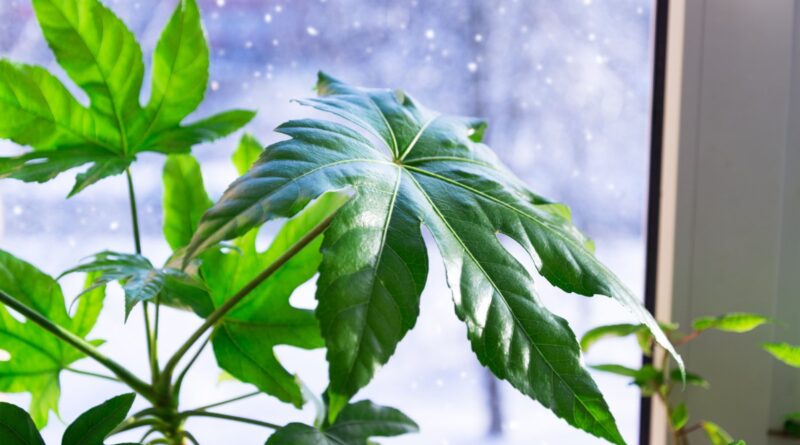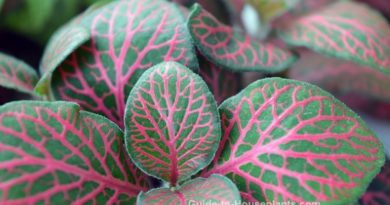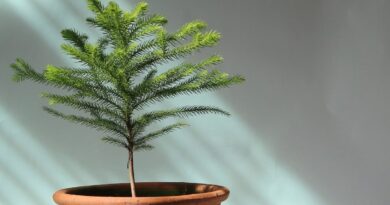Keep Indoor Plants Healthy in Winter
I am not a major fan of winter. Cold weather and shorter days tend to sap all my energy and motivation. Luckily, I have a few friends I can commiserate with over the colder months – my houseplants.
Although houseplants generally undergo less dramatic changes than many outdoor plants in winter, they do respond to lower light and temperatures by slowing growth and prioritizing rest. These seasonal changes require a slight adjustment in care to ensure our plants remain healthy in winter.
Follow these winter houseplant tips to keep your houseplants happy as temperatures drop.
Slow Watering

As temperatures drop and days get shorter, plants react much like humans do – by relaxing. The changes in conditions mean your houseplants won’t put out much new growth, conserving their energy for later in the season.
When growth slows, your plants absorb much less moisture, as they need fewer resources to survive. Lower temperatures and less sunlight also mean the soil dries out slowly, retaining moisture for longer than usual.
To manage these changes, the first way to keep indoor plants healthy in winter is to adjust your watering routine. This prevents potential overwatering and subsequent root rot that can cause serious damage in winter. Check the soil before you water, and you’ll find you can go several days longer without water than you used to.
Don’t Fertilize

In winter, plants require less water and use fewer nutrients. Feeding in winter will push the plant to produce new growth when conditions are not quite right. Any new growth that does appear will probably be weak and diminished, unable to support itself. If your temperatures drop much lower in winter indoors, this new growth is also more vulnerable to cold damage.
As there should be limited new growth to fuel, most houseplants will be happy with the nutrients remaining in the soil over the cooler months. Even if there is a slight deficiency, the regular spring feeding that accompanies new growth should be enough to support the plant.
Stopping fertilizing over the winter months also gives the roots a bit of a break and prevents salt buildup in the soil that can damage roots over time.
Fertilizing constantly throughout the year increases the chances of overfeeding and the problems that come with that. But a break throughout winter gives you a chance to flush the soil and avoid any damage that may stunt growth rather than help it.
Move To A Sunnier Spot

Sunlight availability changes constantly throughout the year. In winter, the hours of sunlight are not only shorter but the position and angles of the sun change too. A houseplant that was previously in the perfect spot may now experience far less indirect light than before. In that case, it’s time to make some adjustments.
Moving your houseplants slightly closer to a light source over winter can improve growth and limit leaf loss. They will even appreciate some direct sun in the early mornings, as the sunlight is far less intense than it is in the peak of summer.
When moving your plants, it’s best not to make any drastic changes, especially in winter when the plants struggle to adapt. You’re looking to match the amount and quality of sunlight they received previously, not give them more than they’re used to.
Supplement With Grow Lights

For fussier houseplants or houseplants that grow in direct sun, moving them closer to a window may not be enough to keep them happy. And if you live in an area with very short days and gloomy winters, even tougher houseplants may struggle.
To avoid any serious growth issues over winter, you can counteract the lack of light with indoor grow lights. These lights mimic natural sunlight, maintaining consistent levels when the sun might be almost non-existent outdoors.
Grow lights are especially helpful if you’re growing full-sun plants indoors, like citrus or succulents. Grow lights will prevent any stretching and weak stems that can negatively impact growth long after winter has passed.
Make sure you adjust the intensity of your grow lights based on the plants you’re growing. Full power for several hours per day may damage the leaves of tropical houseplants accustomed to lower light levels.
Monitor Temperatures

The next tip is probably second nature because you’ll be monitoring temperatures for yourself anyway. But it’s important to keep a continuous eye on the temperatures around your houseplants specifically, as any accidental drafts can cause serious damage.
Most houseplants are not tolerant of cold temperatures, which is one of the reasons why they’re perfect for growing indoors. Tropical houseplants like peace lilies or monsteras stop growing when temperatures drop below around 60°F (16°C) and can face serious leaf and stem damage if they’re exposed to temperatures below 50°F (10°C).
It’s vital to keep your cold-sensitive houseplants away from any drafts over winter. Only a few hours of accidental exposure can have a dramatic impact. Keep windows closed and ensure foliage isn’t touching icy windows directly.
Keep Plants Away From Heat Sources

Just as it’s important to protect plants from cold, you should watch out for heating sources, too. Radiators, fireplaces, or smaller portable heaters can create harsh conditions for houseplants – even those that love warmth.
I made the mistake of placing one of my houseplants close to a fireplace, forgetting that the position would become a problem in winter. After a few hours of flames and several shriveled and sad leaves, I realized my mistake.
If you couldn’t stand that close to a heat source without a break for several hours, your houseplants can’t either. Try to keep temperatures as consistent as possible indoors, as constant switches between too hot and too cold will lead to stress.
Up The Humidity

Humidity is an often-overlooked environmental factor that can greatly impact growth, especially throughout winter. Your humidity may be around the ideal 50% in spring and summer, but as soon as you start using heaters indoors, humidity will drop dramatically.
The humidity can often drop below 30% inside our homes in winter, creating a harsh environment for tropical plants. Tougher plants (like ZZ plants or snake plants) may be able to manage for short periods, but any sensitive houseplants in your care will likely react by wilting and dropping leaves.
A humidifier is a huge asset at any time of the year, but particularly so in winter. They keep the humidity levels consistent throughout the year, providing the ideal environment for your houseplants to thrive.
Avoid Repotting

Spending more time indoors with your houseplants can encourage some tinkering. Maybe you want to prune a wayward branch or repot a plant that looks like it could use more room. Unfortunately, winter is the worst possible time to repot your houseplants.
As I’ve mentioned, houseplants don’t do much growing over winter due to lack of sunlight and temperature dips. This also means they take much longer to adjust to new environments or heal from stress. And repotting – with new soil conditions, extra room, and handling of the roots – leads to a lot of stress.
Repotting is also quite ineffective over winter. You want to repot your plants when the roots are actively growing, giving them a chance to spread out into the new soil. Little root growth happens over winter, so it’s far better to wait until spring to repot.
Tidy Up

If you’ve adjusted your environmental conditions as above, houseplants actually become much more low maintenance in winter. With less watering and feeding and tasks like pruning and repotting off the table, you should have some free time to do a little tidying.
Some houseplants may drop their leaves in winter, so make sure you clear those up as they drop. Dying leaves can provide a hideout for pests that settle in in winter and become a massive problem in spring.
Speaking of pests, it’s also good to keep a close eye out for any bugs over winter. Spider mites are particularly problematic as they thrive in warm and dry conditions. If you spot any pests, treat them immediately to avoid a population explosion in spring.
Finally, do some dusting and clean the leaves of your houseplants. A layer of dust can hinder essential processes that plants need to stay alive. Wipe down the leaves (especially plants with large leaves like fiddle leaf figs) with a damp cloth to keep them shiny.
Don’t Panic

It’s important to remember that, just like our gardens outdoors, our houseplants change throughout the seasons. There will be some yellowing, a few lost leaves, and a general lack of growth over the cooler months.
Don’t panic when you notice any of these signs. Rushing to fix stunted growth with extra watering, feeding, pruning, or other fixes will only do more damage. Give your houseplants a break and get excited for spring when they will bounce back.
Final Thoughts
Houseplant care over winter requires some adjustments, but nothing even absolute beginners can’t handle. Follow these tips to keep your houseplants happy and alive in winter.




